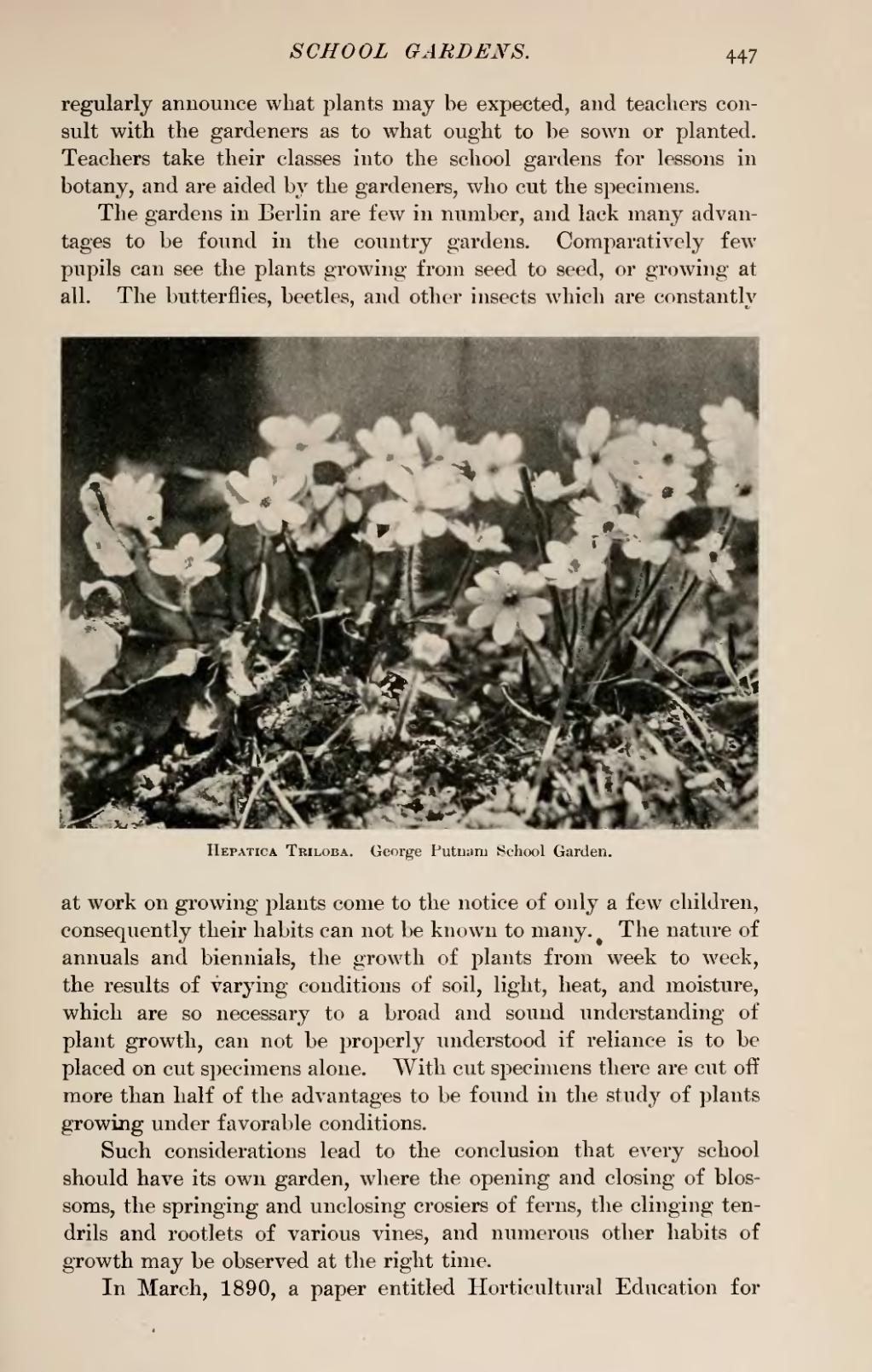regularly announce what plants may be expected, and teachers consult with the gardeners as to what ought to be sown or planted. Teachers take their classes into the school gardens for lessons in botany, and are aided by the gardeners, who cut the specimens.
The gardens in Berlin are few in number, and lack many advantages to be found in the country gardens. Comparatively few pupils can see the plants growing from seed to seed, or growing at all. The butterflies, beetles, and other insects which are constantly

Hepatica Triloba. George Putnam School Garden.
at work on growing plants come to the notice of only a few children, consequently their habits can not be known to many. The nature of annuals and biennials, the growth of plants from week to week, the results of varying conditions of soil, light, heat, and moisture, which are so necessary to a broad and sound understanding of plant growth, can not be properly understood if reliance is to be placed on cut specimens alone. With cut specimens there are cut off more than half of the advantages to be found in the study of plants growing under favorable conditions.
Such considerations lead to the conclusion that every school should have its own garden, where the opening and closing of blossoms, the springing and unclosing crosiers of ferns, the clinging tendrils and rootlets of various vines, and numerous other habits of growth may be observed at the right time.
In March, 1890, a paper entitled Horticultural Education for
